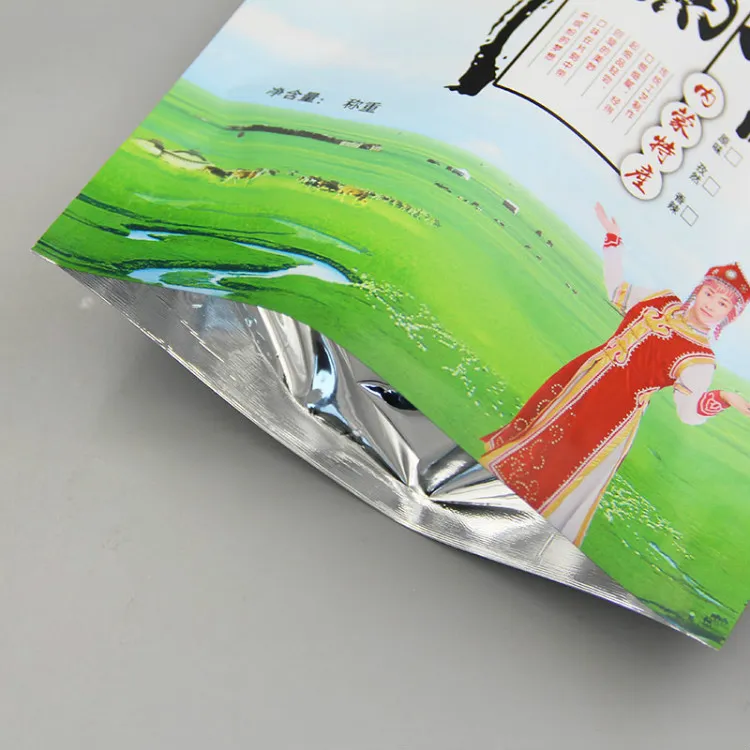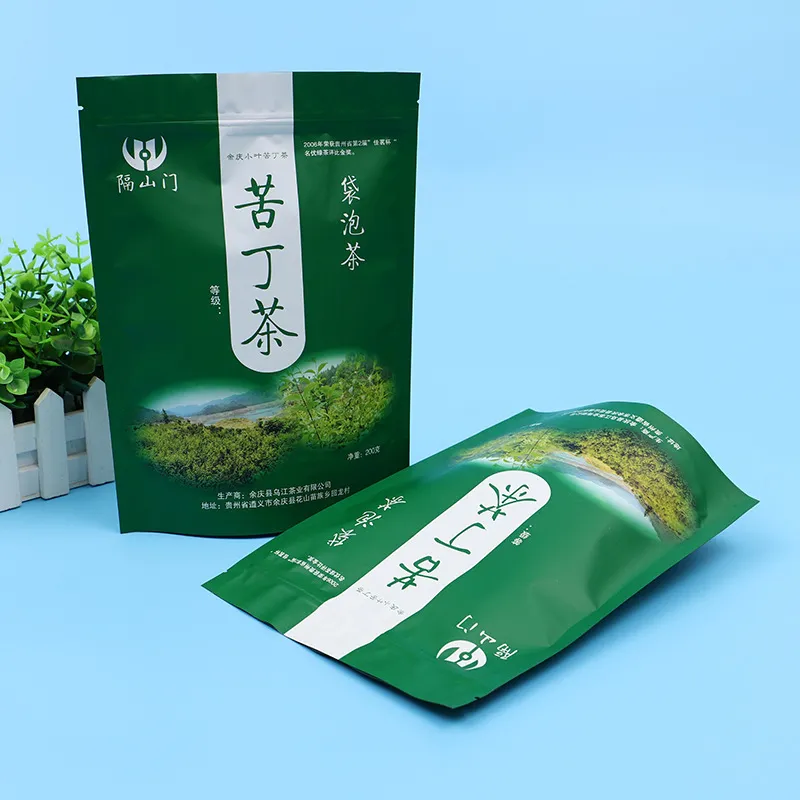- Introduction: Overview of aluminium bag
products
- The Science and Technology Behind Aluminium Insulation Bags
- Unveiling the Aluminium Seal Bag: Protection and Longevity
- Aluminium Plastic Bags: Hybrid Innovation for Modern Packaging
- Leading Manufacturers Comparison: Features and Performance
- Tailored Solutions: Custom Aluminium Bag Options
- Case Studies and Real-World Applications of Aluminium Bag Solutions

(aluminium bag)
Introduction: The Rise of Aluminium Bag Solutions in Packaging
In the modern era, aluminium bag solutions have redefined packaging standards across numerous sectors. Characterised by their remarkable barrier properties, durability, and lightweight nature, aluminium bags are widely adopted for storing, transporting, and protecting various products. According to Global Market Insights, the global aluminium packaging market exceeded USD 51 billion in 2022 and is projected to grow at a CAGR of 4.4% from 2023 to 2032. The demand surge can be attributed to the increasing need for advanced preservation techniques and sustainable packaging alternatives.
These packaging solutions are not limited to just one form; they include aluminium insulation bags, seal bags, and innovative aluminium plastic bag variants. Each variant caters to specialized needs, ensuring product freshness, regulatory compliance, and user safety. Their evolution signals a shift toward smarter, eco-friendlier packaging, responding to both industry requirements and consumer demands.
The Science and Technology Behind Aluminium Insulation Bags
Aluminium insulation bags utilize advanced multilayer structures engineered to regulate temperature and protect against external atmospheric factors. Typically, these bags are composed of an outer aluminium foil layer, an insulating middle material—such as polyethylene (PE), expanded polyethylene (EPE), or bubble film—and an inner food-grade lining. The aluminium foil’s reflectivity rate, which is typically up to 95%, significantly reduces heat transfer by radiation while the insulating core prevents conduction.
Laboratory tests demonstrate that aluminium insulation bags can maintain perishables at the desired temperature range for more than 8 hours, with a thermal conductivity rate as low as 0.033 W/(m·K). They also excel at protecting pharmaceuticals, chemicals, and electronics from moisture intrusion, oxygen ingress, and microbial growth. Furthermore, aluminium is non-toxic and approved by the FDA and EU regulations for direct food contact.
Unveiling the Aluminium Seal Bag: Protection and Longevity
The aluminium seal bag stands out due to its capability to provide hermetic sealing, offering one of the most impenetrable barriers against gases, UV light, and moisture available on the market. With moisture vapor transmission rates typically under 0.01 g/(m²·24hr) and oxygen transmission rates below 0.05 cc/(m²·24hr), the shelf life of sensitive goods is extended considerably. The toughness of aluminium foil increases puncture resistance, ensures tamper-evidence, and protects contents against odors and contaminants.
These features make aluminium seal bags an excellent choice for industries with strict protection requirements—ranging from pet foods and nutraceuticals to electronics and medical supplies. Recyclability and energy-efficient production further underpin their sustainability advantages, enabling compliance with the world’s strictest environmental and safety policies.
Aluminium Plastic Bags: Hybrid Innovation for Modern Packaging
Combining the strengths of both aluminium foil and flexible plastic films, aluminium plastic bags represent a new era in high-performance packaging. These composite bags typically consist of multiple layers: exterior plastic for mechanical strength and branding, a middle aluminium foil for barrier protection, and an inner sealant for product integrity.
Compared to traditional single-material packaging, aluminium plastic bags achieve a 30-80% improvement in gas and moisture barrier performance. They withstand frequent bending and handling with minimal risk of delamination, making them ideal for coffee, tea, powdered supplements, and specialty chemicals. Customizable shapes, print finishes, tear notches, and zip-lock closures provide end-users with premium aesthetics and experience.
Leading Manufacturers Comparison: Features and Performance
Selecting the right aluminium bag supplier involves assessing technical specifications, compliance, manufacturing capacity, and support services. Below is a comparison table showcasing key players and their leading products:
| Manufacturer |
Main Product Type |
Barrier Performance
(Moisture/Oxygen) |
Food-Safe Certification |
Customisation Range |
Annual Output |
| LaminPack Industries |
Aluminium Insulation Bag |
0.008 g/(m²·24hr)
0.040 cc/(m²·24hr) |
FDA, EU |
Size, Thickness, Print |
230M bags |
| SteriFoil Co. |
Aluminium Seal Bag |
0.010 g/(m²·24hr)
0.045 cc/(m²·24hr) |
FDA, BRC |
Valve, Zip-lock, Gusset |
120M bags |
| EcoBarrier Solutions |
Aluminium Plastic Bag |
0.012 g/(m²·24hr)
0.055 cc/(m²·24hr) |
ISO 22000 |
Material Layers, Color |
195M bags |
| FlexiFoil Packaging |
Custom Hybrid Bag |
0.010 g/(m²·24hr)
0.048 cc/(m²·24hr) |
FDA, EU, Kosher |
Window, Shape, Laser Scoring |
160M bags |
The table highlights the diversity in technical performance and customization options offered by industry leaders. Businesses should evaluate which suppliers align most closely with their sector’s unique safety and branding requirements.
Tailored Solutions: Custom Aluminium Bag Options
Recognizing that every product is unique, manufacturers offer fully tailored aluminium bag solutions to address specific sensitivity, shape, branding, and logistical needs. Multilayer engineering enables adaptability in barrier properties, ranging from extreme low moisture permeability for pharmaceuticals to reinforced mechanical strength for bulk commodities. Clients can specify thickness (usually 12–50 µm for household use, up to 150 µm for industrial applications), printing quality (up to 10-color rotogravure), and integration of advanced features like anti-counterfeit holograms, RFID tags, and easy-peel seals.
Design teams collaborate with customers to deliver 3D prototypes, facilitate drop tests, and monitor compliance with food, chemical, or medical-grade standards. Loyalty programs, just-in-time delivery systems, and sustainability certifications distinguish the most customer-oriented suppliers. With custom aluminium bags, companies ensure optimal product protection and maximize shelf appeal in competitive marketplaces.
Case Studies and Real-World Applications of Aluminium Bag Solutions
Industries worldwide have leveraged aluminium bag innovations for improved product safety, operational efficiency, and regulatory compliance. For instance, a leading pharmaceutical exporter reduced spoilage rates by 70% after adopting high-barrier insulation bags for temperature-sensitive vaccines during overseas transport. Similarly, a specialty coffee producer tripled its international shelf life and penetrated premium markets using custom aluminium plastic bags with one-way degassing valves.
In the electronics sector, a renowned device manufacturer eliminated corrosion-related warranty claims by utilizing anti-static aluminium seal bags for packaging sensitive circuit boards. Foodservice organizations significantly minimized food waste by up to 50% during transit, aligning with sustainability initiatives. These multifaceted real-world benefits exemplify how aluminium bag solutions drive measurable results across industries.
As global standards for quality, sustainability, and consumer safety continue to rise, the strategic adoption of aluminium bag technologies ensures businesses stay ahead in both compliance and innovation.

(aluminium bag)
FAQS on aluminium bag
Q: What is an aluminium bag used for?
A: Aluminium bags are typically used for packaging and protecting items from moisture, light, and air. They are ideal for food storage and pharmaceutical applications.
Q: How does an aluminium insulation bag work?
A: An aluminium insulation bag provides thermal insulation by reflecting heat away and reducing temperature shifts. It's commonly used to keep food or medicines at stable temperatures during transport.
Q: What are the benefits of using an aluminium seal bag?
A: Aluminium seal bags offer airtight and tamper-evident packaging, preserving freshness and preventing contamination. They are often used for sensitive products like electronics or perishables.
Q: What is the difference between an aluminium plastic bag and a regular plastic bag?
A: Aluminium plastic bags are made with a layer of aluminium foil combined with plastic, enhancing barrier properties. They provide superior protection compared to regular plastic bags.
Q: Are aluminium insulation bags reusable?
A: Yes, many aluminium insulation bags are designed for multiple uses if handled carefully. Reusability depends on the bag’s structure and the type of closure system it uses.